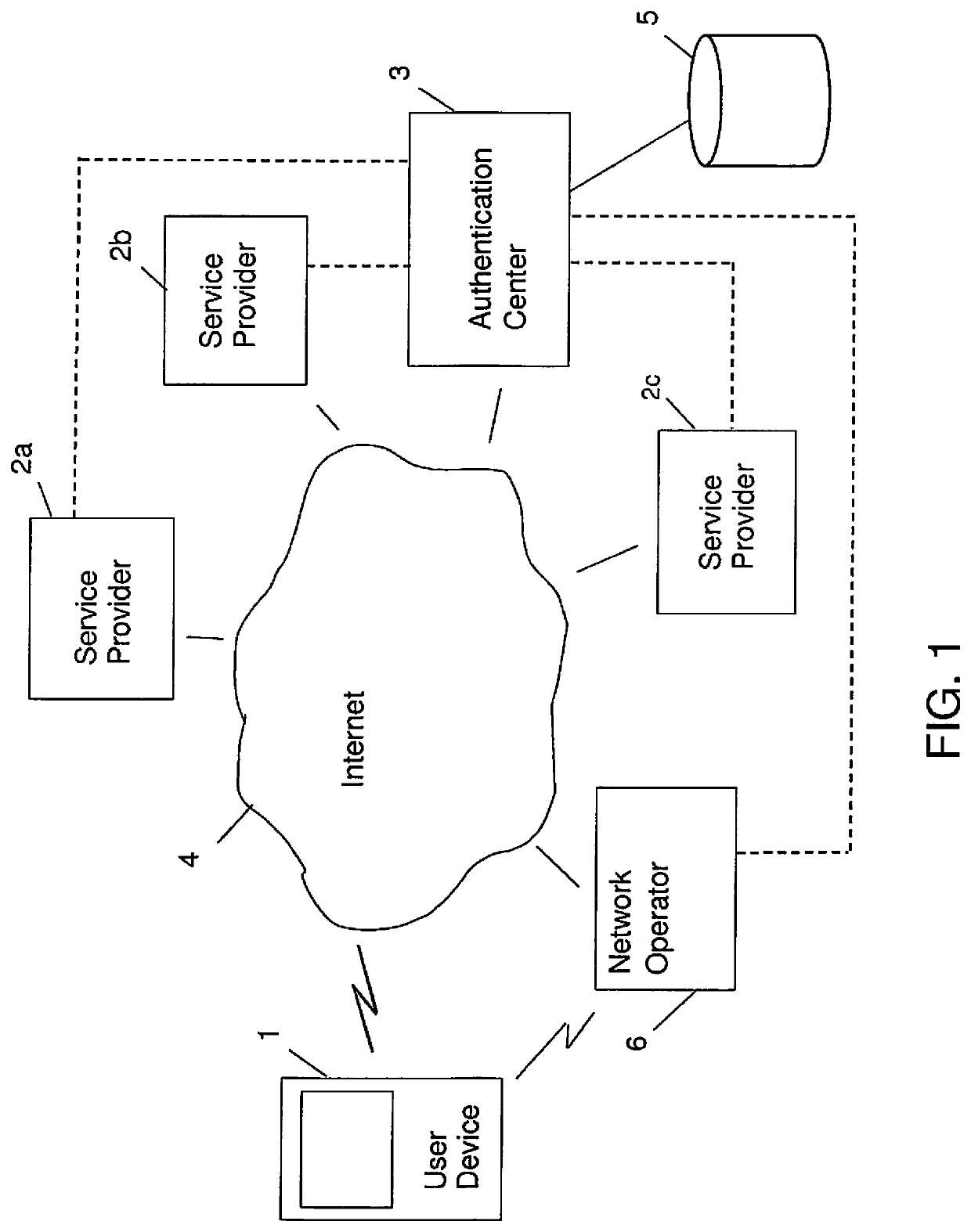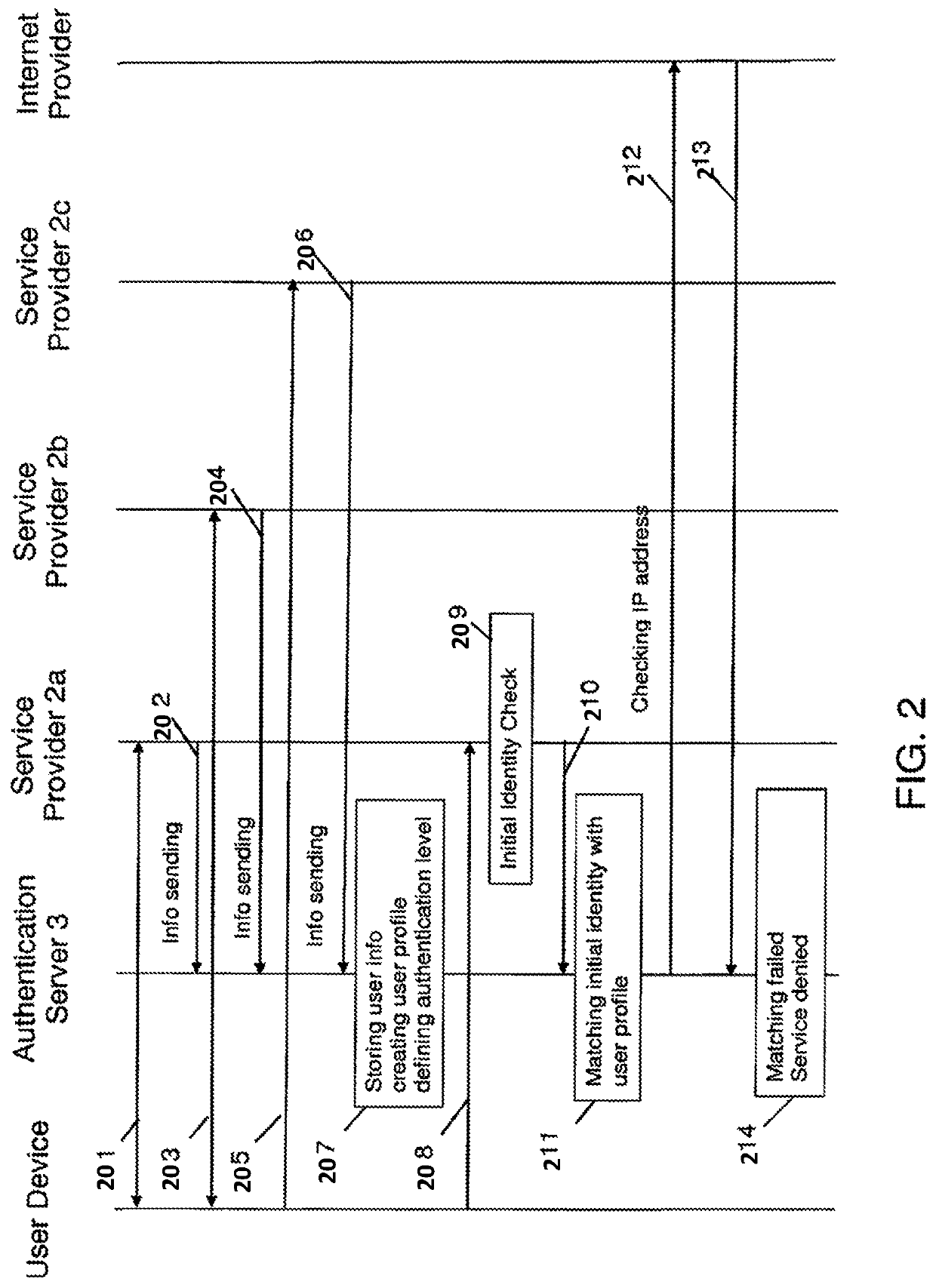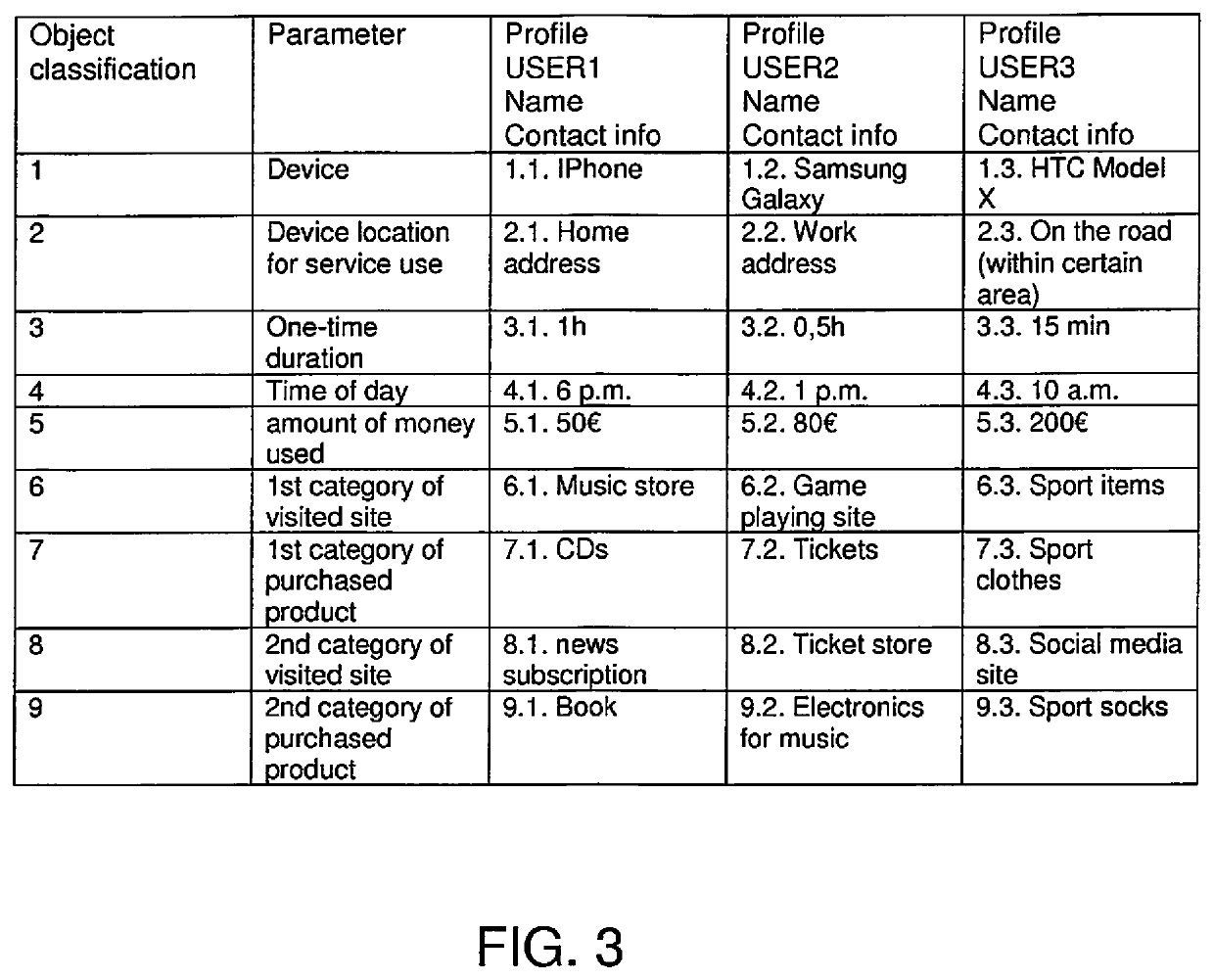Method and system for user authentication
a user authentication and user technology, applied in the field of user authentication, can solve the problems of improper or inexistent use of the technology, different kinds of risks, and m monetary losses for people,
- Summary
- Abstract
- Description
- Claims
- Application Information
AI Technical Summary
Benefits of technology
Problems solved by technology
Method used
Image
Examples
Embodiment Construction
[0081]FIG. 1 is an example view of a telecommunication network, wherein the invention can be implemented. The telecommunication network comprises a user device 1, service providers 2a, 2b, 2c providing services for users and an authentication server 3 with an authentication service and a network operator 6. The authentication server 3 provides the authentication service to the service providers 2a, 2b, 2c. All these entities mentioned are connected to the Internet 4 by means of a wired or wireless connection.
[0082]The authentication service can, however, also be implemented to work through a telephone network, such as the Global System for Mobile Communications (GSM).
[0083]With service provider (SP) is here meant a company that provides application services to users and companies through the Internet referring to a third party or outsourced supplier. The network operator 6 can be a mobile network operator or MNO, also known as a wireless service provider, being a provider of wireles...
PUM
 Login to View More
Login to View More Abstract
Description
Claims
Application Information
 Login to View More
Login to View More - R&D
- Intellectual Property
- Life Sciences
- Materials
- Tech Scout
- Unparalleled Data Quality
- Higher Quality Content
- 60% Fewer Hallucinations
Browse by: Latest US Patents, China's latest patents, Technical Efficacy Thesaurus, Application Domain, Technology Topic, Popular Technical Reports.
© 2025 PatSnap. All rights reserved.Legal|Privacy policy|Modern Slavery Act Transparency Statement|Sitemap|About US| Contact US: help@patsnap.com



